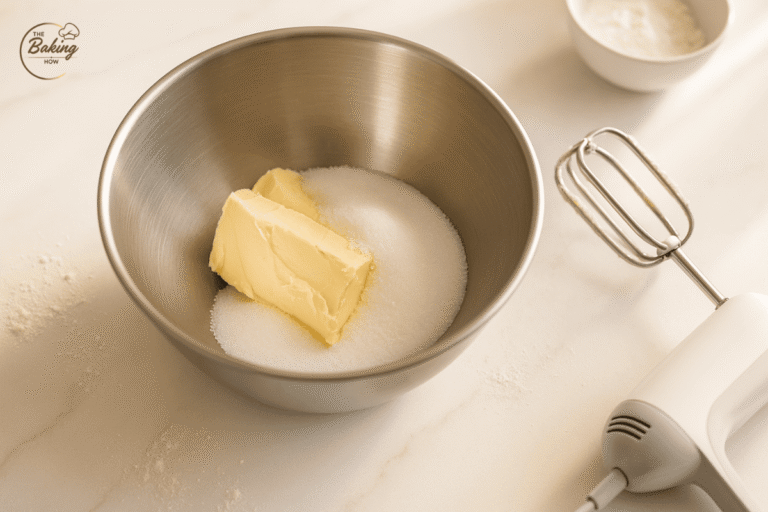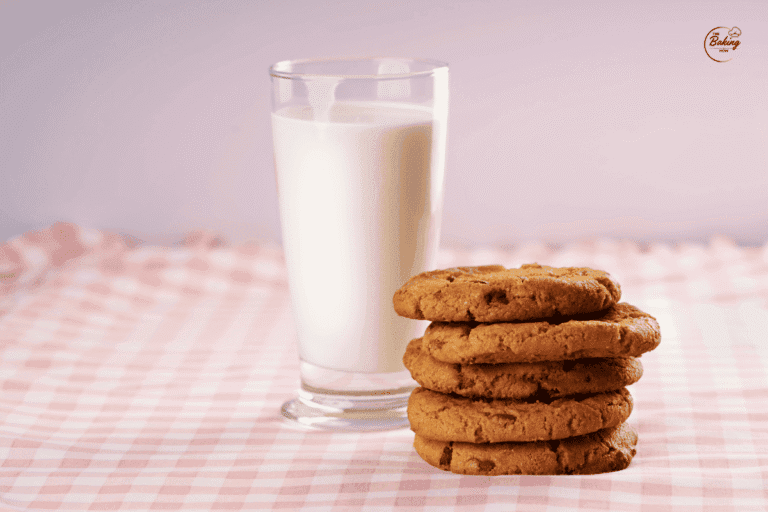Why Are My Cookies Not Chewy? (And How to Fix It)

Have you ever wondered Why Are My Cookies Not Chewy? Don’t worry — you’re not alone! Many home bakers love the soft, chewy texture in cookies but don’t know how to achieve it, leaving their cookies dry, crispy, or crumbly instead.
Here’s the secret: getting perfectly chewy cookies depends on the right balance of ingredients, proper mixing techniques, and precise baking time. Sugar, in particular, plays a major role in creating that moist, tender bite you’re craving.
In this guide, I’ll share the most common reasons your cookies aren’t chewy and my 17 years of professional baking experience to help you master this texture at home. From ingredient tips to expert fixes, let’s make every batch turn out soft, chewy, and irresistible.
Why Are My Cookies Not Chewy? (Explained)
The chewy texture of cookies depends on three key factors: ingredient ratios, mixing methods, and baking temperature. Small changes in these areas can completely transform how your cookies turn out.
Ingredient Ratios
Sugar plays the biggest role in chewiness. When you use a higher sugar ratio in your recipe, it mixes with the water in your dough and creates a soft, elastic texture. During baking, sugar melts and caramelizes at high heat, which locks in moisture and gives cookies their signature chew.
Flour type also matters. High-gluten flour (like bread flour) makes the dough slightly rubbery, which translates into a chewier bite.
Mixing Techniques
Mixing techniques can change everything. If you add all your ingredients at once and mix them thoroughly, the dough develops more gluten, which leads to chewier cookies.
Baking Time & Temperature
Baking temperature is crucial too. Lower temperatures with slightly longer baking times encourage sugar caramelization, resulting in a chewy texture.
💡 From My 17 Years in the Cookie Industry
In industrial production, most customers prefer cookies that are crisp on the edges and soft in the middle. But one time, while developing a new recipe, I accidentally added too much sugar. The result? Cookies that were incredibly chewy but also sweeter than intended! This taught me an important lesson: if you want chewy cookies, be ready to balance sweetness too.
How to Make Cookies Chewy (Step-by-Step)
In this section we will discuss the reasons and troubleshooting to fix the cookies that aren’t chewy. If you consider these things in your baking time, your cookies will always come from the oven chewy and sweet.
Adjust Ingredient Ratios for Chewier Cookies
If your cookies are turning out dry or crumbly, adjusting the ingredient ratios is the first step to achieving that perfect chewy texture.
Balance Sugar and Fat
Increase the sugar slightly in your recipe. As sugar caramelizes during baking, the excess sugar creates a soft and chewy consistency. But keep in mind: more sugar can also cause cookies to spread and flatten. You can balance this by slightly reducing the butter or fat content.
Extra Egg Addition
Add an extra egg yolk to the dough. Egg yolks are rich in fat and act as a natural tenderizer, helping to lock in moisture and prevent cookies from drying out.
Use Brown Sugar for Moisture
Use brown sugar instead of white sugar (or a mix of both). Brown sugar retains more moisture and contributes to a deeper flavor, which is key for soft, chewy cookies.
Flour Type
Switch to higher-gluten flour (like bread flour or a mix of bread and all-purpose flour). This provides more structure to hold the dough together, preventing excessive spreading from the extra sugar.
Pro Tip (from my industry experience):
“In our commercial cookie production, we often adjust sugar and fat ratios depending on customer preferences. For chewier cookies, we slightly increase the sugar and substitute part of the fat with emulsifiers to maintain shape and texture.”

Change Your Mixing Technique for Perfectly Chewy Cookies
Your mixing technique is just as important as the ingredients when it comes to achieving chewy cookies.
Creaming Time Matters
For chewy cookies, focus on the creaming stage. Beat the butter (or fat) and sugar together for a longer time at medium speed. This allows the sugar to begin breaking down and emulsifies the mixture, leading to early caramelization during baking. The result? A richer, chewier texture.
Avoid Overmixing Flour
Avoid overmixing after adding the flour. Once you incorporate flour into the dough, mix gently and only until combined. Overmixing at this stage develops too much gluten, which can make your cookies tough, rubbery, and dry.
Ingredients Temperature
Always use room-temperature ingredients. Cold butter or eggs will not cream properly, while overly warm ingredients can make the dough greasy and difficult to handle. Room-temperature ingredients help create a smoother dough and more consistent cookie texture.
Pro Tip (from my 17 years of experience):
“In commercial bakeries, we carefully control mixing speeds and temperatures. Over-creaming or under-mixing at critical stages can completely change the final product’s texture.”

Adjust Baking Temperature & Time for Chewy Cookies
Baking time and temperature are critical factors in determining whether your cookies turn out chewy, crispy, or underbaked.
Cookie Dough Piece Farming
Portion cookie dough evenly. Before baking, make sure each cookie dough ball is the same weight for even baking. Uneven portions can cause variations:
- Too small: edges over bake and harden, while the center stays underbaked.
- Too large: cookies may bake unevenly, with dense, undercooked centers.
We discussed more about cookie dough portioning in our post on 7 Common Cookie Baking Mistakes.
Affiliate Tip: For accuracy, use a digital kitchen scale to weigh each dough ball instead of guessing. Precise portioning ensures even baking and consistent texture every time.
Manage oven temperature carefully.
- Lower baking temperatures (with longer baking times) dry cookies out, making them hard and crunchy.
- Higher baking temperatures set the cookie edges faster, leaving the center softer and chewier.
A reliable oven thermometer is a great tool to ensure your oven runs at the correct temperature, as many ovens have slight inaccuracies.
Pro Tip (from my 17 years in the baking industry):
“In commercial bakeries, we monitor both cookie weight and oven temperature carefully. Even slight variations can dramatically change texture and consistency.”

Chewy vs. Crispy Cookies – Which Do You Prefer?
Every baker has their favorite cookie texture: some love a soft, chewy center that stretches slightly with each bite, while others crave the snap and crunch of a perfectly baked crispy cookie. So, what exactly makes the difference between these two textures?
What makes cookies chewy?
- High sugar content (especially brown sugar) retains moisture.
- Extra egg yolk adds richness and chewiness.
- Shorter baking time and slightly underbaking help keep the centers soft.
- Use of high-protein flour (like bread flour) enhances gluten formation for chewiness.
What makes cookies crispy?
- Higher butter-to-sugar ratio creates thinner, crispier cookies.
- Granulated white sugar encourages spreading and crisp edges.
- Longer baking time at lower temperatures removes more moisture.
Pro Tip: For crispy cookies, bake them on a perforated baking tray to allow better airflow and even browning.
💡 Related Post: Check out 5 Must-Have Baking Tools for Beginners to set up your kitchen for perfect cookies.

Final Thoughts: Unlocking the Secret to Chewy Cookies
Mastering the art of chewy cookies isn’t just about following a recipe—it’s about understanding how ingredients, mixing techniques, and baking conditions work together. From using the right sugar to adjusting baking times, every little tweak can make a big difference in texture.
With these expert insights (drawn from my 17+ years in the cookie industry), you’re now equipped to troubleshoot and perfect your cookie game. Whether you’re aiming for a soft, chewy center or a crispy edge, you’ll know exactly what to do.
Want to dive deeper into cookie science? Check out this cookie texture guide from King Arthur Baking for even more tips on achieving your perfect cookie.
Next Step: Gather your ingredients, experiment with these pro tips, and let your oven do the magic. And don’t forget—start with the right tools. Our guide to must-have cookie baking tools is a great place to begin.




